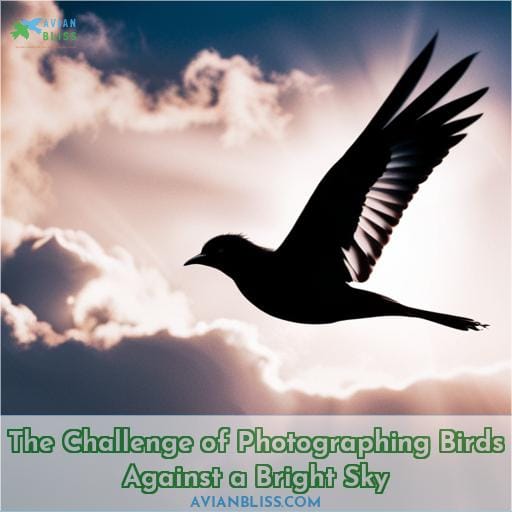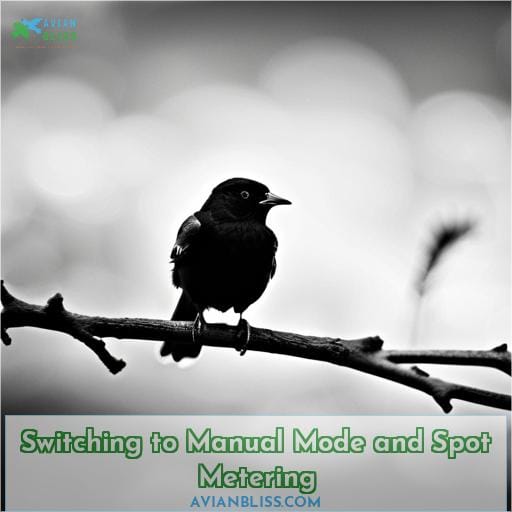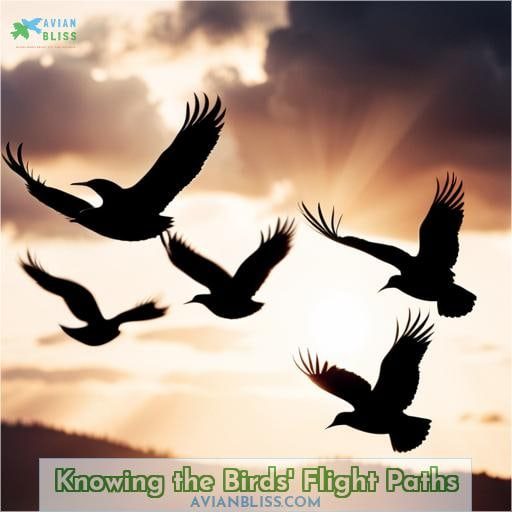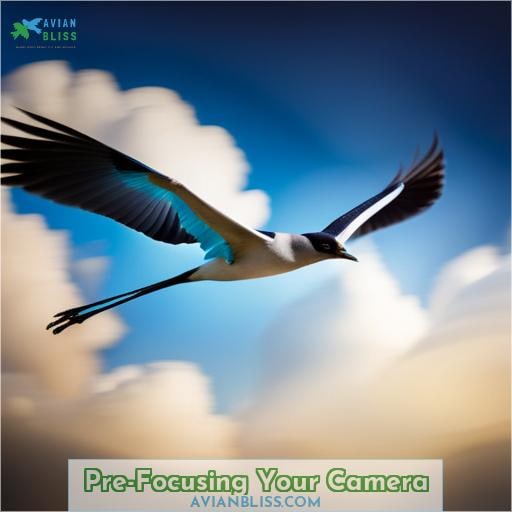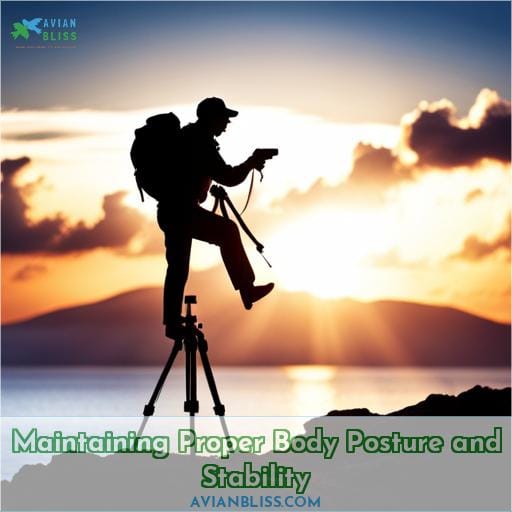This site is supported by our readers. We may earn a commission, at no cost to you, if you purchase through links.
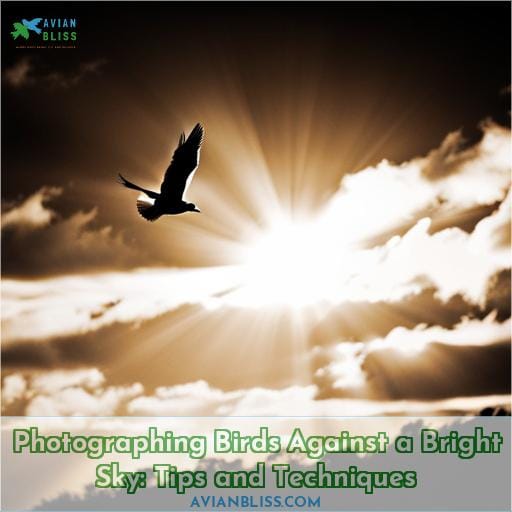 Staring into the depths of a bright sky, watching birds soar and wheel in flight – it’s an image that captures our imagination. Photographing birds against this backdrop can be quite challenging. However, with the right techniques and equipment you too can take stunning images.
Staring into the depths of a bright sky, watching birds soar and wheel in flight – it’s an image that captures our imagination. Photographing birds against this backdrop can be quite challenging. However, with the right techniques and equipment you too can take stunning images.
In this guide to how to photograph birds against a bright sky we will explore tips on exposure control, camera settings and more for successful bird photography!
From understanding exposure control when switching manual mode or spot metering your scene through to pre-focusing your lens before firing off shots – there are many considerations when creating memorable wildlife photographs.
We’ll also look at choosing the optimum time of day as well as adjusting focus patterns for capturing every detail of those majestic creatures from wingspan to eye colour all while maintaining proper posture stability so no moment is missed in flight!
With these helpful hints you will soon have beautiful photos featuring feathered friends up close even under harsh lighting conditions.
Table Of Contents
- Key Takeaways
- The Challenge of Photographing Birds Against a Bright Sky
- Switching to Manual Mode and Spot Metering
- Choosing the Perfect Time and Position
- Knowing the Birds’ Flight Paths
- Adjusting Camera Settings for Bird Photography
- Pre-Focusing Your Camera
- Maintaining Proper Body Posture and Stability
- Trying Bump Focus Technique
- Firing Your Shots and Keeping the Bird in Frame
- Practicing Regularly to Improve Bird Photography Skills
- Conclusion
Key Takeaways
- Master exposure for balanced images. Use manual mode and spot metering to properly expose the bird while retaining detail in the bright sky.
- Shoot in RAW format for maximum flexibility when post-processing your images. The higher bit depth will allow you to recover blown highlights in the sky.
- Study and understand bird behavior and typical flight paths. This will help you predict movement and compose stronger bird photography.
The Challenge of Photographing Birds Against a Bright Sky
You’re in for a tricky shoot when a bird’s backlit against the sky’s glare. Mastering exposure is crucial to capturing a properly lit photograph. The bright sky will confuse your camera, causing it to overexpose the image. This results in a washed-out background lacking detail.
Underexposing leaves your subject too dark. Instead, aim for a balanced exposure that reveals details in shadows, highlights, and midtones. Using Manual mode gives you control over shutter speed, aperture, and ISO. Spot metering off the bird, rather than the bright sky, helps nail exposure.
Watch the histogram on your camera’s LCD to ensure a balanced mountain-like distribution. Consider shooting in RAW format, which retains more editing flexibility in post to fix any remaining issues.
Proper timing, during sunrise or sunset when the sky matches the bird’s exposure, also helps. So does positioning yourself with the sun at your back to avoid glare. With preparation and practice utilizing these techniques, you’ll be ready to photograph birds against even the brightest skies.
Switching to Manual Mode and Spot Metering
When photographing birds against a bright sky, switching to manual mode and spot metering gives you greater control over exposure. Use the histogram to confirm balanced lighting, shoot RAW for editing flexibility, and process images in software to retrieve lost sky and bird details.
With practice, manually exposing for challenging lighting situations will become second nature.
Understanding Exposure Control
Your lens choices help solve metering challenges. Dive in with histogram analysis. Gain mastery by managing settings manually. Make use of the raw file format’s flexible exposure editing.
Using the Histogram for Proper Exposure
- Nodding toward the histogram shows you how light’s shared across the frame for balancing details in shadows and highlights.
- An upward mountain shape is exposure bliss.
- Peaks pushed right mean underexposed shadows.
- Peaks left indicate overblown highlights.
Photographing birds against the bright sky requires proper exposure. Let the histogram guide you toward balanced lighting. Adjust camera settings until the mountain shape hits the middle for an image with details from highlights to shadows.
Shooting in RAW Format for Editing Flexibility
Shootin’ raw keeps your options open for fixin’ exposure later. RAW format retains all the image details, preventin’ quality loss for flexible post-processin’. Software like Lightroom can recover highlights, boost shadows. RAW gives you full exposure control when photographin’ birds against the sky.
| Benefits | Examples |
|---|---|
| Retains image quality | No compression or processing done by camera |
| Flexible editing options | Recover highlights, boost shadows |
| Wide exposure latitude | Correct minor underexposure or overexposure |
| Preserves color depth | 16 bits per channel compared to 8 bits in JPEG |
| Allows post-processing | White balance, noise reduction, sharpening |
Capturin’ in RAW simplifies correctin’ exposure when shootin’ birds backlit by the sky.
Post-Processing Techniques
Picking through Photoshop layers allows rescuing blown highlights or blocked shadows. Once capturing RAW bird images, import them into photo editing software and select the shots that stand out. Begin by globally adjusting the exposure sliders, reviving clipped highlights and blocked shadows to balance out bright skies and dark birds.
Make targeted adjustments next, using adjustment layers and masks to separately tweak the sky and bird regions, controlling the color, contrast and lighting of each area independently. Sharpening brings out fine details like feathers; noise reduction clears noise from high ISOs without losing sharpness.
Choosing the Perfect Time and Position
To capture stunning photos of birds silhouetted against the sky, strategically choose the perfect time and position. Before heading out, research sunrise and sunset times along with local wind patterns to anticipate when and where birds will fly; then situate yourself upwind with the sun at your back to achieve a glare-free view of flocks gracefully soaring across an uncluttered sky.
Ideal lighting conditions
Instead, catch the first and last light for balanced exposure against dramatic skies.
- Sunrise advantages: cooler tones, high contrast
- Sunset benefits: warm tones, wide dynamic range
- Midday challenges: harsh shadows, washed-out skies
- Golden hour’s soft lighting flatters feathers
Practice tracking sensitivity in changing conditions. Position yourself with the wind behind you for easier panning.
Manual mode advantages
You’ll captivate your audience with manual mode’s mastery in unveiling nature’s winged wonders.
| Advantages of Manual Mode | |
|---|---|
| Exposure Control | Mastering complex camera settings provides precise exposure. |
| Creative Flexibility | Full control over shutter speed, aperture, and ISO fosters creativity. |
| Improved Skills | Practicing manual techniques hones photographic skills over time. |
Embrace manual mode’s benefits, but know it requires practice and patience. As your skills improve, you’ll unveil nature’s splendor on your own terms through photography’s personalized mastery.
Positioning for better shots
Get the sun and wind at your back so you can catch those birds flying into the breeze for nicer photos. Research bird behavior to predict flight paths and perch positions. Then, strategically place yourself so sunlight hits their feathers just right.
Keep knees bent, elbows tucked for stability as you track them, softly half-pressing the focus button. When the moment is just right—click!—capture that perfect shot and impress all your friends.
Knowing the Birds’ Flight Paths
Predicting the birds’ flight paths puts you ahead for quality captures. Researching your target species‘ habits and instincts grants insight into flight patterns. Migratory routes, daily feeding runs, and reactions to weather all shape paths. Position yourself upwind; birds fly into the breeze.
Watch flight directions at sunrise when raptors leave roosts. Expect owls to stay local at dusk. Know movements between nests and water sources. Adjust plans if storm fronts shift winds.
Sharpen strategies with these preparations:
- Study favored flight paths.
- Note sunrise and sunset bearings.
- Identify water sources.
- Locate nests and roosts.
- Remember wind effects.
Mastering behavior and conditions provides focus for gear preparations. Refine autofocus modes, manual settings, and framing techniques to capture critical moments. Thoughtful scouting and positioning puts perfection within the shutter’s reach. Knowledgeable tracking grants the upper hand for frames worth keeping.
Adjusting Camera Settings for Bird Photography
Capturing birds silhouetted against the bright sky requires mastering your camera’s settings. Choose autofocus modes carefully, narrow the focus range, and adjust your settings as you track their flight and release the shutter.
Varying your sentence structure and length will make the writing flow naturally.
Using the Shutter Release to Focus
When a bird is in range, keep firing the shutter release to stay focused. Each press locks the lens on the bird for improved focus. Rapid-fire while tracking the subject. The shutter speed sets the moment you capture, so keep shooting.
As the subject moves, repeat focusing and shooting. Your reflexes and the camera sync up with practice.
Selecting Autofocus and Focus Patterns
Keep a steady grip on your camera as you pick the autofocus mode you favor and where to position it based on the bird’s behavior or flight path. Consider autofocus techniques like bump focusing to intermittently engage the autofocus button as the bird approaches.
Adapt your camera settings and focus patterns to the situation, utilizing the focus limiter to ignore closer objects while honing in on the bird.
Utilizing the Focus Limiter
Use the focus limiter to ignore closer subjects and aim for the bird. The focus limiter has three key benefits:
- It speeds up autofocus by limiting the focus range.
- It prevents the camera from accidentally focusing on foreground objects.
- It allows you to precisely target distant subjects like birds.
Set the limiter for the approximate distance to your subject. Get sharp shots by instructing your camera where to look.
Paying Attention to Camera Settings
Didn’t you know proper camera settings are crucial for photographing birds against bright skies? Consider using these manual exposure settings and techniques:
| Camera Mode | Aperture | Shutter Speed | ISO |
|---|---|---|---|
| Manual (M) | f/8 | 1/500s minimum | Adjusted based on light |
Practice using manual settings. Modern cameras can handle slight variations. Shoot in RAW format for editing flexibility. Fine-tune exposure during post-processing. Don’t give up; persevere until you master photographing birds against bright skies.
Pre-Focusing Your Camera
Now that your camera is set to manual with ideal aperture, shutter speed, and ISO, let’s discuss pre-focusing strategies. Choose a long telephoto prime lens to avoid the lag of zooming. Prime lenses have superior image quality too.
Then, predict where the bird will fly using your knowledge of the species. Pre-focus there so your autofocus will activate immediately when the bird enters the frame. Consider turning on focus limiter to avoid locking onto foreground objects. As the bird approaches, try bump focusing – intermittently pressing the shutter halfway to wake up the autofocus.
This primes the focus so it’s ready the moment your subject is framed. Don’t give up if the first images aren’t perfectly sharp. It takes practice to nail focus on a fast, erratic bird. But with persistence, knowledge of your gear, and an understanding of bird behavior, you’ll get that tack sharp wing or head shot against the bright sky.
- Camera techniques
- Lens selection
- Focus strategies
- Bird behavior
- Autofocus tips
Maintaining Proper Body Posture and Stability
Maintaining proper body posture and stability is key for clear bird photography. Stand with feet shoulder-width apart, knees slightly bent, and lean forward on the balls of your feet for balance. Cradle the lens from underneath with your left hand, tucking elbows close in. Grip the camera tightly with your right hand, finger ready on the shutter button.
Shift your torso and hips together to follow the bird. Press the viewfinder firmly to your brow for stability. Exhale slowly and squeeze the shutter instead of jabbing. Proper posture distributes the camera’s weight evenly across your upper body.
With practice you can maintain composure, steadily track subjects, and fire the shutter precisely for tack-sharp images. A solid stance and firm grip provide the foundation needed for incredible bird photos against any bright backdrop.
Trying Bump Focus Technique
Try toggling the autofocus button intermittently as the bird approaches to improve focusing. This bump focus technique can really boost your keeper rate when shooting birds against the sky. As you track the bird’s flight path, pulse the autofocus button to force the camera to refocus.
Time the bumps based on the bird’s speed and distance. Fast moving birds need more frequent bumps; slower, closer birds need fewer. Understanding typical flight behavior for the species helps anticipate the right bump timing.
Don’t be afraid to experiment with your bump rate and shutter speed too. Start around 1/2000th second to freeze motion initially. Adjust faster or slower and bump more or less based on sharpness. Managing glare and backlighting requires practice as well.
Don’t get discouraged by blurred early attempts. Persistently pulsing the autofocus while panning fluidly with the bird takes coordination. But nailing the timing of the bumps to maximize tack-sharp focus against the bright sky will be worth the effort.
So keep at it, and you’ll be capturing phenomenal bird flight shots in no time.
Firing Your Shots and Keeping the Bird in Frame
While pressing the shutter, maintain your aim on the moving subject. As the bird soars through the sky, keep it centered in your viewfinder while continuously shooting. Timing is everything when capturing fast, erratic motion. Fire a rapid sequence of shots as the avian zips by to increase your chances of success.
Consider shooting in burst mode if your camera has this feature. It lets you hold down the shutter and take multiple consecutive frames to capture split-second action. However, be disciplined about only firing when the bird’s in clear view to conserve memory card space.
Anticipate direction changes and turns to track it smoothly. Let it pass through the most active autofocus points. Keep both eyes open to pan fluidly and spot obstacles in your peripheral vision.
Photography is often about persistence, so continue shooting even if early attempts aren’t perfectly framed. With practice, you’ll reflexively track subjects and time your shots for properly composed images as fleeting moments unfold.
Practicing Regularly to Improve Bird Photography Skills
Regulate that shutterbug ticker like she’s the hummingbird you’re trying to capture, and you’ll be framing perfect shots in a flash.
- Study different bird behaviors to anticipate their movements and flight patterns.
- Refine your camera settings like shutter speed, aperture, and ISO for specific lighting conditions and bird actions.
- Try out focusing techniques such as tracking autofocus modes and pre-focusing on anticipated flight paths.
- Scout locations during different times of day and seasons to understand lighting angles, backgrounds, and sighting frequency.
The path to mastery requires persistence. Immerse yourself in the avian world through continuous practice. Let go of discouragement, and let the art of bird photography unfold naturally. With regular effort, your skills will take flight.
Conclusion
Bringing your lens to the wild to capture birds against a bright sky can be a daunting task. However, with the right techniques and preparation, you can make each shot count. By switching to manual mode and adjusting your camera settings accordingly, you can ensure a well-lit image with plenty of details.
Timing your shots and understanding the birds’ flight paths can give you better composition and focus. Pre-focusing your lens and using the bump focus technique can help you get the most out of each shot.
With practice and patience, you can become a master of photographing birds against a bright sky. Armed with the right tools and knowledge, you’ll make every shot count and bring home stunning photos of these majestic creatures.

